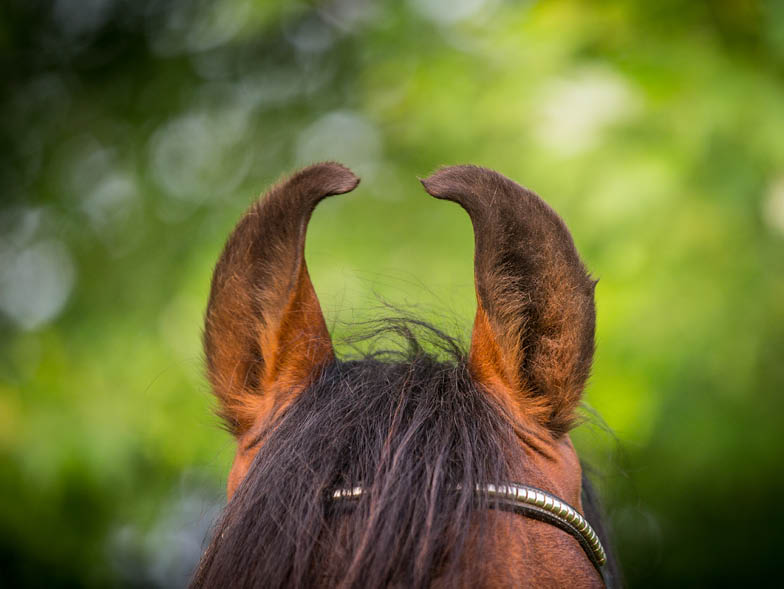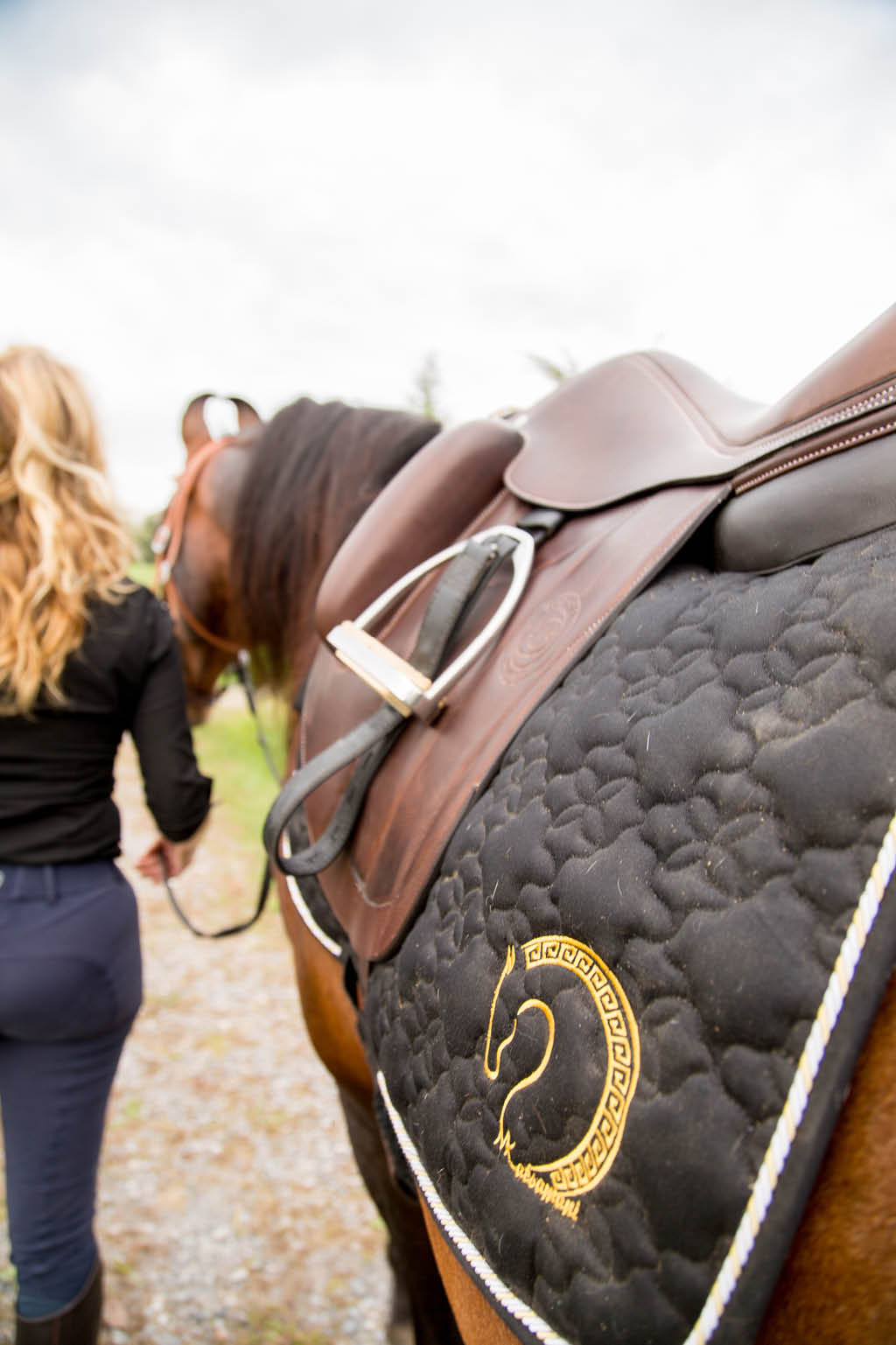Creating Harmony with Horses: Interview with Dr. Maria Katsamanis
Author and world-renowned horse trainer Dr. Maria Katsamanis discusses her Greek upbringing, the intrinsic human-equine connection, and her latest projects aimed at helping horses.
Who inspired your love of horses in Greece?
There was an older cavalryman in my village who influenced me when I was around eight. He was known for his exceptional horsemanship, which was always admired by the townspeople. I wanted to be just like him.
What is your training?
From a young age, I was fascinated by understanding and communicating with horses; I actually learned English by reading horse training manuals. I began my formal education in riding horses later in childhood. However, my parents quickly squashed the idea that I, as a woman, would make a career in an industry that is so hard physically. Education was encouraged instead.
I continued to ride with some great people—Greek, Russian, and French—who would take me under their wing because I was so enthusiastic and hardworking. Even throughout my formal education years, though, I continued learning about horses and eventually started training them.
My parents weren’t wrong: it is a harsh industry. But I’ve felt since I was a child that this is my calling. It’s more than a job for me. In retrospect, I am grateful that they insisted on a formal education because I can contribute much more to the horse world by having a larger perspective on both horses and life.

What truths have you learned about horsemanship?
One thing I learned is how to be disciplined, patient, and methodical. It takes time. In our age of texting and smartphones, classical horsemanship is considered old school. In that sense, classical training is a lost art.
I’ve also learned that the “language of energy” is the common denominator that bonds all creatures. This is an age-old truth; classical pro-horse pieces of wisdom have endured through time. For example, an ancient Greek soldier, Xenophon, is thought to have written the first documented book on how to train horses. He talked about horse communication centuries ago and about being friends with your horse.
Today, new advances in science continue to help us understand what happens between a horse and a human to create this magical bond. I’m trying to help people recognize that these findings help us become better partners to our horses—as well as to people close to us.
Do you have a global approach to horsemanship?
Yes; I learn from cultures all over the world. For example, in Spain I met a young Moroccan man who grew up in the North African desert training Arab horses using only a rope. Someone in the Western world would probably look at him and give credit to something that somebody here marketed. I’ve found that there is a collective, unconscious undercurrent of wisdom among cultures on how to train and connect with their horses.
Is this the basis for molecular equitation, a principle discussed in your book, The Alchemy of Lightness?
It is. My coauthor and I came up with the term to help explain timeless principles along with advances in new quantum physics that explain horse and human connecting on a molecular level. Through my horsemanship, I’m a vehicle to express this reality and champion it in the world.

Where and what do you teach?
My home base farm location is in Ringoes, New Jersey. I continue to maintain my title as clinical assistant professor at Rutgers New Jersey Medical School in the department of psychiatry. I developed an elective course years ago to improve medical students’ empathy, bedside manners, and nonverbal communication skills using horses to further understand and help their patients. I am also invited to lecture throughout the year on various psychology topics. When I cannot travel to help someone at their location, I arrange to meet via live webinars, where I can coach and guide them with their horse anywhere in the world.
How often do you travel to help horses versus people coming to you for help?
When I was younger, before relocating to my farm in New Jersey, my bread and butter was running around the planet to places like Qatar and Dubai. A few years ago, I cut down on travel and focused more on establishing a home base in the States. I now travel, at most, four days a month.
What are your more recent equestrian projects?
Most recently, I launched an online course series, Creating Magic with Your Horse, that introduces the philosophy behind what is, for me, an art form.
In 2016, I started a nonprofit called Friends for Pegasus, which rehabilitates and transforms horses so they can be adopted. It’s been helpful to me because, when I train horses, I’m often left with an unfinished feeling due to an owner’s time or budgetary constraints. Friends for Pegasus allows me to train one horse at a time and document those techniques to promote better training methods for others to implement.
I’ve also started hosting international equestrian tours in various countries. We did our maiden voyage to India—the home of the Marwari horse, the rarest horse in the world—in December of 2018. We stayed at Castle Mandawa in Rajasthan for a week and were treated like royalty. It was the chance to experience the Marwari horses in their native land. The tour included a three-day clinic with me and guided trail rides in the neighboring areas. It was truly the trip of a lifetime.

How much of what you do is based on instinct?
Because of the way they’ve been ridden or treated before, horses are sometimes silent, even numb—they’ve learned not to say anything. Dr. Martin Seligman, a famous psychologist, had coined the term for this: learned helplessness. When domesticated animals are scared or uncomfortable, they seem to check out, which we can mistakenly read as compliance. Sometimes they’ll display behaviors that we consider dangerous. Oftentimes, out of nowhere, I’ll get insights from a horse about the horse itself or perhaps about its owner. I feel that horses sense that I’m listening and therefore they have a lot to say to me.
I think this communication is accessible to everyone—but it’s not part of our culture to trust our animal instincts. In my world, I’ve learned to trust and further cultivate this instinct. If I’m on a horse that’s mentally detached, I feel lonely, like I’m with a disinterested dance partner. Part of my work is getting them out of their shell and showing people that they are trying to communicate.
What are the top three things you wish people would do differently with horses?
First, prioritize their comfort. Change the primary question that you ask—“What can I do for you?” instead of “What can you do for me?” Second, be present and believe deeply in the possibility of a deep connection with the horse. I work with people to show them some simple but powerful adjustments that are game changers for their partnership.
Finally, make a commitment to not push or pull others, whether horse or human. Doing so changes everything, and not just with horses.
What is the most satisfying aspect of what you do?
Watching the transformation. It’s like creating magic before your eyes, not only for the horses but also for the people who ride them. It’s rewarding to see that. The horse is always waiting for that connection with us; the horse’s state is pure. I’m just inviting him to that place to have a dialogue. The horse becomes a moving art form, and the human aspires to make this connection the ultimate masterpiece.
For more info, visit mariakatsamanis.com






















